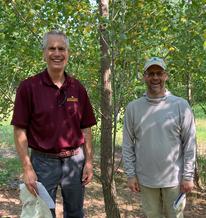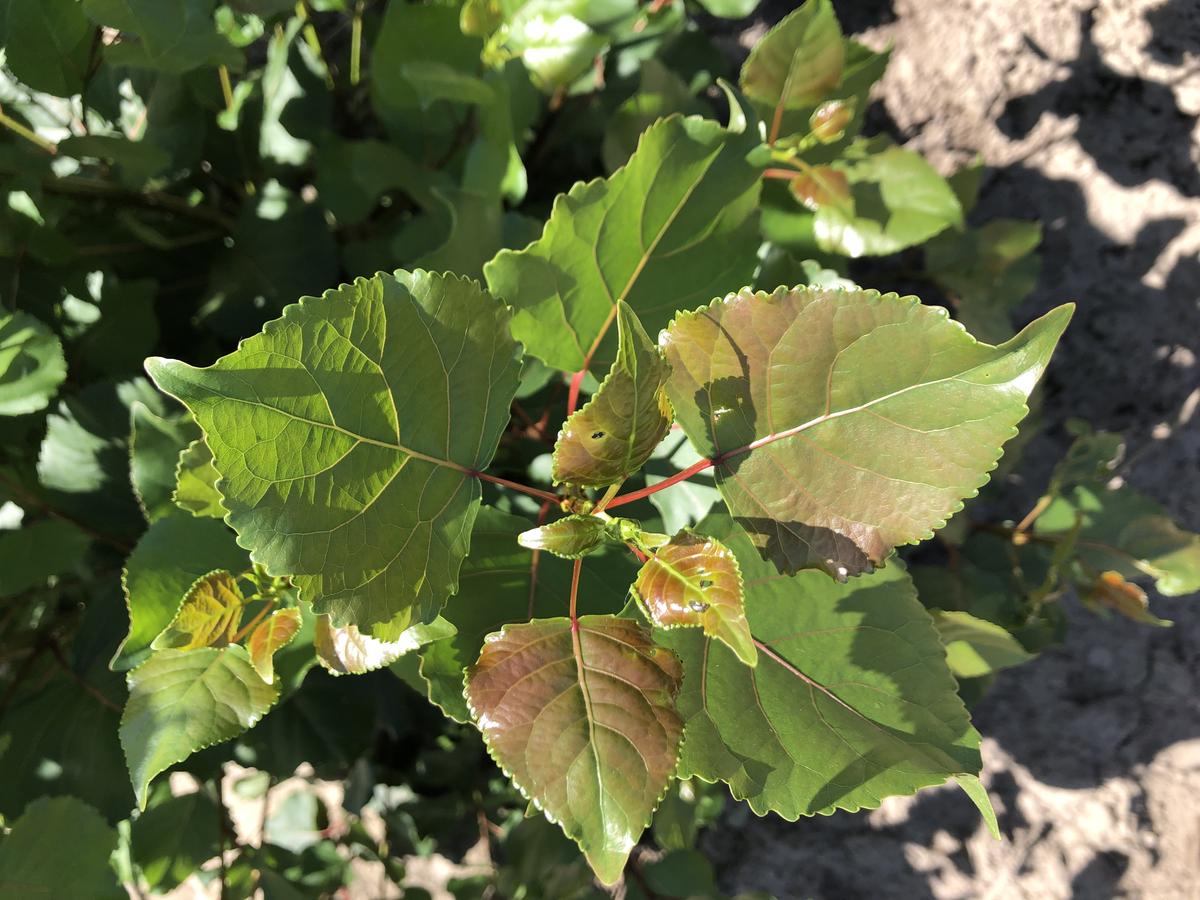Humans have a long history of making a big mess. Our legacy manufacturing activities, landfills, and leaky gasoline storage tanks have, in one place or another, leached harmful chemicals into the environment – and to us.
But an old friend is standing by to help clean up our mess.
Trees. Super awesome trees.
That’s how Ron Zalesny describes NRRI’s fast-growing hybrid poplar trees. Deployed as a phytoremediation tool, these trees can take up harmful organic chemicals (compounds with a carbon-hydrogen bond) like PAHs, VOCs and PCBs, and inorganic pollutants like heavy metals, through their roots. The chemicals are stored or break down in the tree roots, wood and leaves.

“NRRI’s poplars establish roots really quickly, grow extremely fast and have awesome disease resistance,” said Zalesny, a research plant geneticist for the USDA Forest Service, Northern Research Station. “That’s the trifecta for why we love them so much.”
NRRI is ready to begin commercial licensing of its top variety of hybrid poplar –patented as InnovaTreeTM – which has performed well in Zalesny’s phytotechnologies research trials.
Decades of Research
NRRI geneticist Bernie McMahon, now retired, spent his 25-year career breeding and cloning a cross between native eastern cottonwood and European black poplar. He nurtured many generations of this cross, taking from the best of the best, for trees that can grow 10 times faster than native aspen and 50 percent faster than current unimproved hybrid poplars. They are also “geo-robust” meaning they can grow well across many climate zones.
The faster and bigger a tree grows, the greater potential it has to take up pollutants from soil and nearby water sources such as streams, freshwater lakes, and groundwater. After harvest, hybrid poplar can be used for bioenergy, landscaping mulch, paper, lumber or engineered wood products.
The USDA Forest Service has partnered with NRRI throughout the decades to develop fast-growing poplar for a variety of specific purposes. Zalesny and his crew are now monitoring 16 agroforestry phytoremediation buffer systems with some 20,000 trees for phytoremediation potential.
“They’re now in the middle of their life cycle,” said Zalesny. “So they’re getting to where we can see the growth and disease advantages of the NRRI varieties.”
Joining Forces
He and other stakeholders have pulled together as a group called Great Lakes Phyto, a consortium focused on incorporating trees into community or industry clean-up efforts to protect regional water systems. Their overarching goal is to develop a protocol that matches different tree genotypes to different contaminants for the most effective remediation.
NRRI’s early focus for the hybrid poplar program was to breed trees for biomass for the pulp and paper industry and other biomass-based products.
“But in the last few years we’ve taken a greater interest in the environmental services our fast-growing trees can provide,” explained Neil Nelson, NRRI research program manager. “Stream bank riparian zones, water treatment and the carbon credit markets that are opening up. We’re looking at all of these other applications, as well as the biomass market.”
Nelson pointed out that NRRI’s InnovaTreeTM is a prime candidate to fill the need of large corporations seeking ways to reduce their carbon footprint by purchasing carbon credits.
Cottonwoods – one of the hybrid’s breeding species -- are large trees with large root systems. NRRI’s InnovaTree™ can help achieve these environmental goals more quickly, more efficiently and in higher volumes than any other species.
Close Collaboration
NRRI and the USDA Forest Service’s Northern Research Station have a long history of working together. But there’s even more on the horizon.
“With NRRI’s expertise and the variety of real-world demonstrations the USDA Forest Service offers, I think we’ll be collaborating for decades to come,” said Zalesny.
